Have you ever wondered, why do dogs have wet noses? This intriguing question has sparked curiosity among pet owners and animal lovers alike. A dog’s wet nose isn’t just an adorable quirk; it serves important purposes that may surprise you! In this article, we will explore the fascinating reasons behind this unique trait. Did you know that a wet nose helps dogs to enhance their sense of smell? This is because the moisture captures scent particles, making their sniffs even more powerful! Moreover, a wet nose can also be a sign of a healthy dog. But what happens when your furry friend’s nose is dry? Should you be concern? Understanding the science behind your dog’s nose can deepen your bond with your pet and improve their well-being. Join us as we dive into the wonderful world of dogs and discover the secrets of their wet noses. Are you ready to uncover why your beloved companion has that moist, cold nose? Let’s get started and unravel the mysteries together!
The Science Behind Canine Hydration: Why Wet Noses Are Essential for Dogs
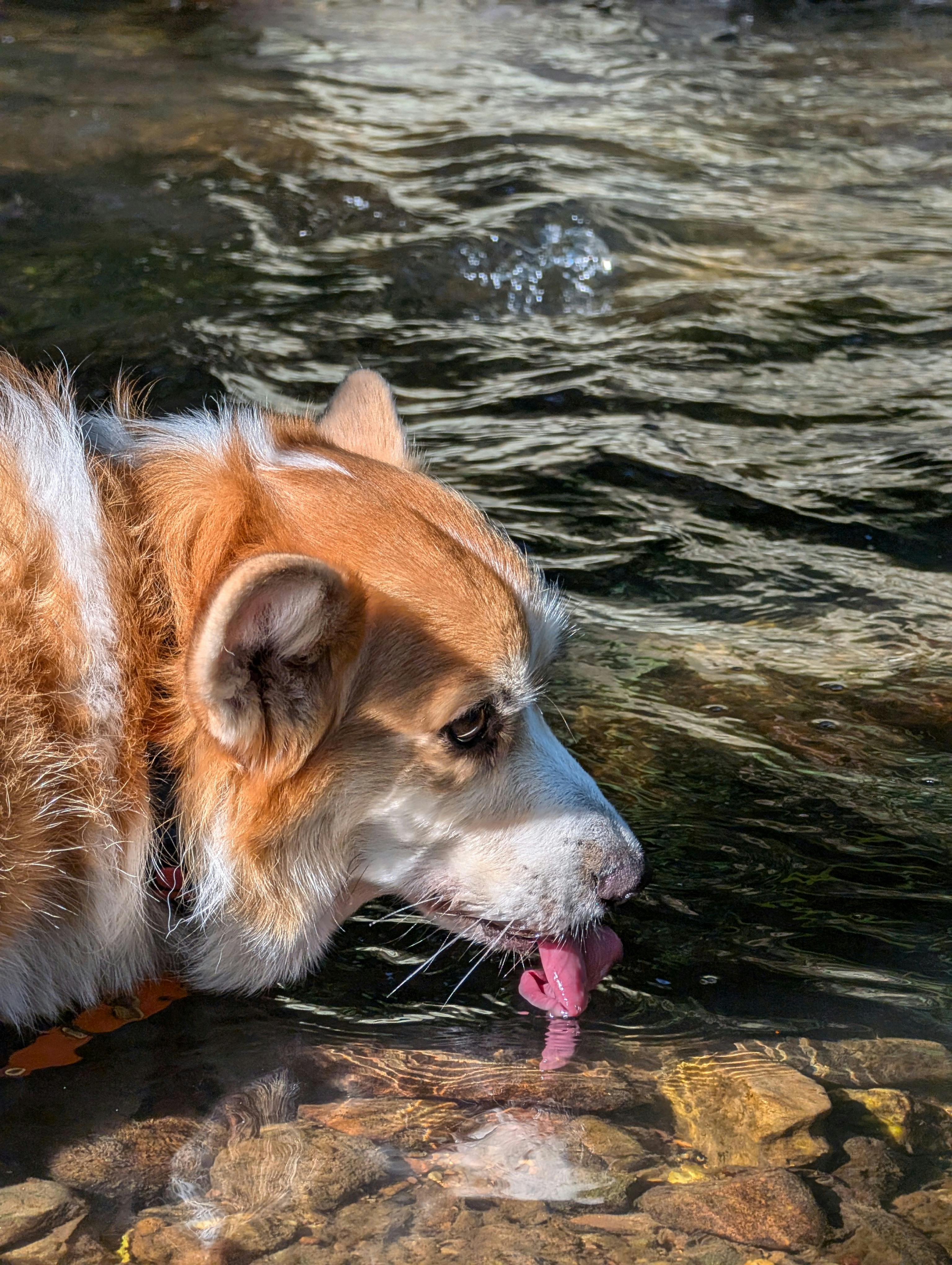
The wet nose of a dog is more than just an adorable feature; it serves critical functions that are essential for their health and well-being. If you’ve ever wondered, “Why do dogs have wet noses?” you’re not alone. This curiosity is common among pet owners and animal lovers alike. Let’s dive into the fascinating science behind canine hydration and discover why those wet noses are so important!
What Makes a Dog’s Nose Wet?
Dog noses are moist for several reasons. One primary function of the wetness is to help them cool down. Unlike humans, who sweat to regulate body temperature, dogs rely on panting and the moisture on their noses to maintain a stable temperature. The wetness helps to evaporate heat, keeping them comfortable, especially in warm weather.
Moreover, the nose secretes a thin layer of mucus that traps scent particles, enhancing a dog’s sense of smell. This is essential for their survival instincts as dogs are naturally curious and often rely on their noses to explore their environments. The moisture helps to dissolve these scent particles, making it easier for dogs to detect various odors.
Why Wet Noses Are Essential for Dogs
Temperature Regulation:
- Dogs can’t sweat like humans do, so a wet nose helps them cool down.
- Evaporation of moisture on the nose surface contributes to overall temperature control.
Enhanced Sense of Smell:
- A wet nose can capture more scent particles, making a dog’s sense of smell more acute.
- This is especially important for hunting or tracking behaviors.
Health Indicator:
- A healthy dog typically has a moist nose, while a dry nose can sometimes signal dehydration or illness.
- However, it’s not always a definitive indicator, as many factors can affect nose moisture.
Historical Context
Historically, dogs have been companions to humans for thousands of years. Their wet noses have evolved alongside them, playing a vital role in their survival. Early humans relied on these animals for hunting, and their keen sense of smell was crucial. The moisture on their noses helped them track scents over long distances, which was beneficial for both the dog and its human companions.
Fun Facts About Dog Noses
- Unique Patterns: Just like human fingerprints, each dog has a unique nose print that can be used for identification.
- Scent Sensitivity: Dogs have up to 300 million scent receptors in their noses, compared to about 5 million in humans.
- Nose Temperature: The temperature of a dog’s nose can vary throughout the day, influenced by external conditions and activity levels.
Factors Affecting Nose Moisture
Several factors can influence how wet or dry a dog’s nose is. Here are some common ones:
- Weather: Hot, dry conditions can lead to increased nose dryness.
- Health Status: Illness, fever, or dehydration can affect moisture levels.
- Age: Older dogs may experience changes in moisture levels due to various health issues.
Comparison: Dogs vs. Other Animals
It’s interesting to compare dogs’ noses to those of other animals. For instance, cats also have moist noses, but they often have a slightly different texture. Here’s a quick comparison:
| Animal Type | Nose Moisture Level | Functionality |
|---|---|---|
| Dogs | Wet | Enhanced sense of smell, cooling |
| Cats | Moderately wet | Good sense of smell, but not as acute |
| Horses | Dry | Primarily rely on other senses |
Practical Tips for Ensuring Healthy Nose Moisture
Pet owners should take steps to ensure their dogs maintain healthy moisture levels in their noses. Here are some tips:
- Hydration: Always provide fresh water to keep your dog hydrated. Dehydration can lead to dry noses.
- Temperature Control: During hot weather, ensure your dog has a cool place to rest.
- Regular Check-Ups: Routine veterinary visits can help monitor your dog’s overall health.
In summary, the wet noses of dogs are not just a cute trait but play a vital role in their health and functioning. Understanding the science behind this unique characteristic can help pet owners ensure their furry friends maintain optimal hydration and well-being. So next time you see your dog’s wet nose, remember it’s doing important work!
5 Fascinating Facts About Wet Noses: Understanding Your Dog’s Unique Biology
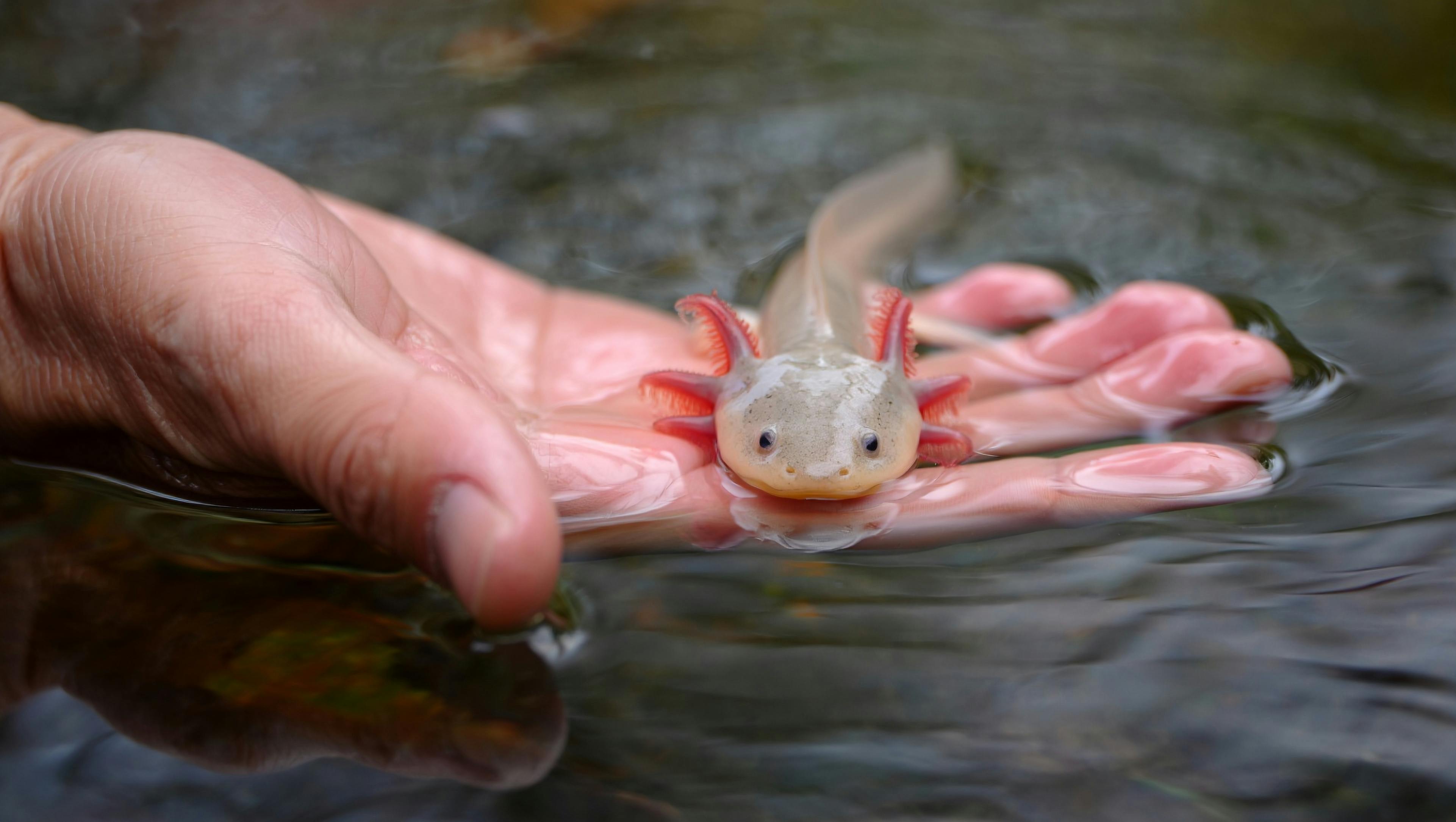
When you think about dogs, one of the first things that come to mind is their adorable wet noses. Ever wonder why they are like that? It’s not just a quirk of nature; it actually has some pretty fascinating biology behind it. Let’s dive into the intriguing world of canines and explore five remarkable facts about why dogs have wet noses.
1. It’s All About Scent Detection
Dogs have an extraordinary sense of smell, which is around 10,000 to 100,000 times more acute than humans. Their wet noses play a crucial role in enhancing this ability. When a dog’s nose is moist, it can trap scent particles more effectively. This makes it easier for them to gather information about their environment. A wet nose helps them to absorb chemicals from the air, which is vital for communication and hunting.
2. Temperature Regulation
Did you know that a dog’s nose helps them regulate their body temperature? Unlike humans who sweat to cool down, dogs primarily rely on panting. However, their noses also contribute to thermoregulation. The moisture on their noses evaporates, which helps to cool down their bodies. So, when you see your dog with a wet nose, it might just be a sign that they are managing their internal temperature.
3. Health Indicators
A dog’s nose can tell you a lot about their health. While a common myth suggests that a wet nose means a dog is healthy and a dry nose indicates sickness, it’s not that simple. Various factors can influence the moisture of a dog’s nose, including the environment, activity level, and even the time of day. Here are some situations where a dog’s nose can signal health concerns:
- Dry and Cracked Nose: This could indicate dehydration or a skin condition.
- Excessively Wet Nose: Sometimes, it can be a sign of allergies or infections.
- Color Changes: A change in color from pink to brown or black could suggest health issues that need vet attention.
4. Evolutionary Advantage
The wet nose is thought to be an evolutionary trait that has given dogs an advantage in survival. Early canines with moist noses were likely better hunters due to their superior sense of smell, allowing them to track prey more efficiently. This trait was passed down through generations, and it remains a prominent feature in modern dogs.
5. Individual Variations
Not all dogs have the same type of wet nose. Just like people have distinct fingerprints, dogs have unique nose prints. Each pattern is different and can actually be used to identify them. Furthermore, certain breeds may have wetter noses than others. For instance, breeds like the Bloodhound are known for their extremely moist noses, which helps them excel in tracking scents. Here’s a quick comparison of different breeds:
| Breed | Nose Type | Scent Ability |
|---|---|---|
| Bloodhound | Very Wet | Exceptional |
| Beagle | Moderately Wet | High |
| Bulldog | Less Moist | Moderate |
| Shih Tzu | Dry Occasionally | Lower |
Fun Facts About Dog Noses
- Nose Ridges: Dogs have unique ridges on their noses, which is as unique as human fingerprints.
- Color Variation: The color of a dog’s nose varies by breed and even individual dogs, ranging from black to pink.
- Age Factor: Puppies are born with pink noses which may darken as they age.
Understanding why dogs have wet noses is not just about biology; it’s a glimpse into their evolutionary journey and their day-to-day lives. So next time you pet your furry friend and feel that cool, moist nose, remember all the fascinating facts behind it!
Being aware of your dog’s unique biology can help you care for them better and recognize any changes that may indicate health issues. Whether you’re a dog owner or just an admirer of these wonderful creatures, knowing about their wet noses adds another layer of appreciation for their incredible capabilities. Keep exploring the world of dogs, there’s always something new to learn!
How a Wet Nose Helps Dogs Detect Scents: The Incredible Olfactory Abilities Explained
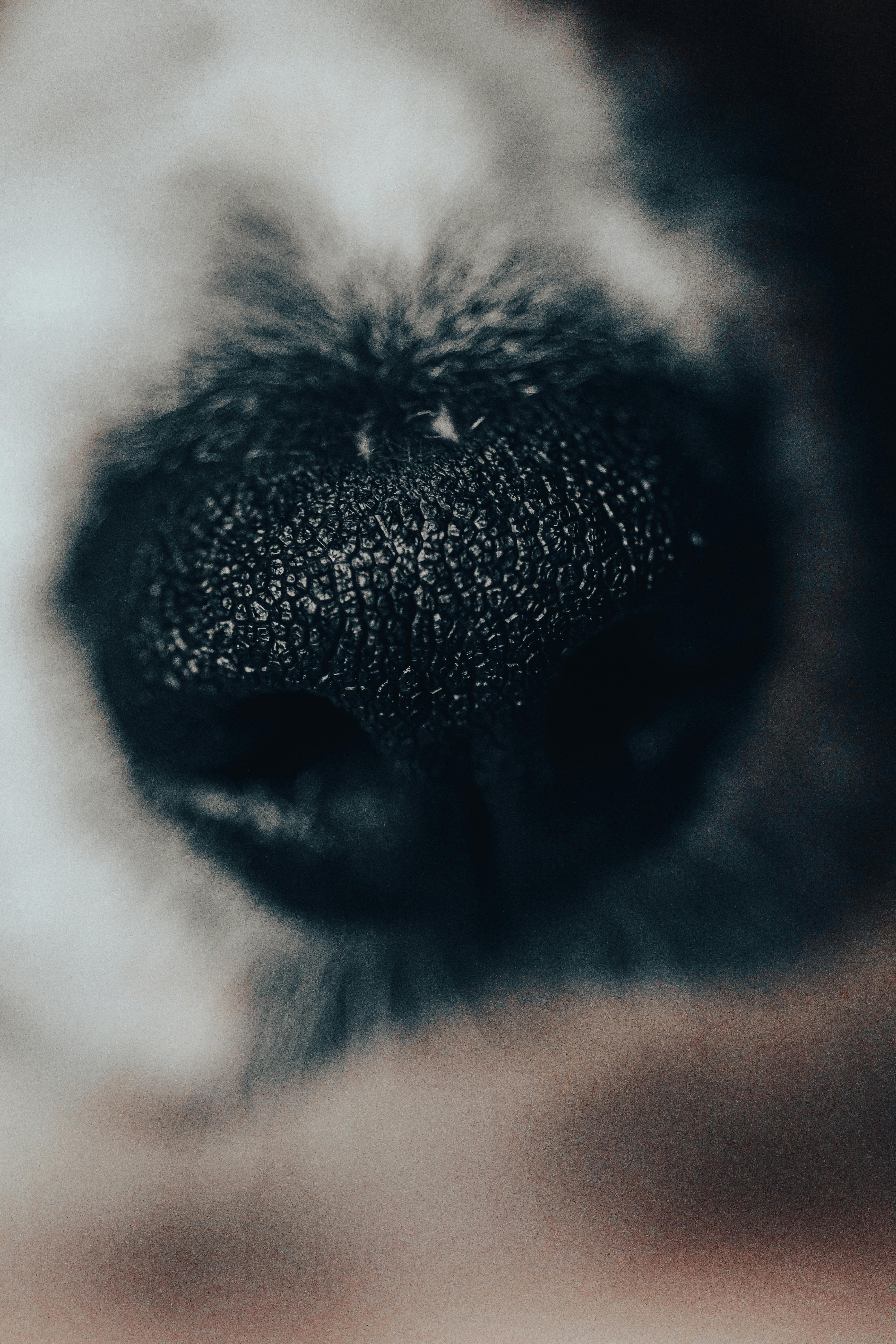
Dogs are truly remarkable creatures, known for their loyalty and companionship. But have you ever wondered why do dogs have wet noses? The answer to this question leads us into the fascinating world of a dog’s incredible olfactory abilities. Dogs’ noses are the key to their exceptional sense of smell, and the wetness plays a significant role in their ability to detect scents. Let’s dive into this topic and uncover the science behind those adorable, wet noses!
Why Are Dogs’ Noses Wet?
The wetness of a dog’s nose is not just a cute feature; it serves multiple vital functions. Here’s a list of reasons why dogs have wet noses:
- Enhanced Scent Detection: A wet nose helps to capture scent particles from the air, allowing dogs to detect smells better. The moisture helps to dissolve the scent chemicals, which makes them easier to absorb.
- Temperature Regulation: Dogs don’t sweat like humans do. Instead, they cool themselves through panting and the evaporation of moisture from their noses. A wet nose helps maintain their body temperature.
- Health Indicator: A wet nose is often a sign of a healthy dog. If a dog’s nose becomes dry or cracked, it may indicate dehydration or illness.
The Science Behind Dog Smell
Dogs have an extraordinary sense of smell that far surpasses humans. While humans have about 5 million olfactory receptors in their noses, dogs boast an astonishing 220 million, depending on the breed. This difference enables dogs to detect scents at incredibly low concentrations.
- Olfactory Bulb Size: The olfactory bulb in a dog’s brain is larger than that in humans, allowing them to process scents more effectively.
- Vomeronasal Organ: This organ helps dogs detect pheromones, which are essential for communication and social interaction among dogs.
Practical Examples of Dogs’ Olfactory Abilities
Dogs use their incredible sense of smell in various practical applications, showcasing their unique capabilities:
- Search and Rescue: Dogs are often employed in search and rescue missions because they can track scents even from days old.
- Detection of Illness: Some dogs can detect certain illnesses in humans, including cancer or diabetes, by smelling changes in body odor.
- Drug and Explosive Detection: Law enforcement agencies use trained dogs to sniff out illegal drugs or explosives, as dogs can identify specific substances with remarkable accuracy.
Historical Context
Historically, dogs have been utilized for their sense of smell for centuries. In ancient times, hunting dogs were bred for their ability to track game. The bond between humans and dogs has evolved, with scent detection becoming an essential part of various fields today.
- Hunting: Dogs were trained to follow game trails and provide assistance to hunters.
- Law Enforcement: The use of dogs in police work began in the 20th century and has expanded significantly over the years.
Comparison of Dogs’ Noses to Humans
To grasp the significance of a dog’s wet nose, let’s compare it to human noses.
| Aspect | Dogs | Humans |
|---|---|---|
| Olfactory Receptors | Approximately 220 million | About 5 million |
| Function of Nose | Scent detection, cooling | Primary breathing function |
| Nose Wetness | Maintains scent absorption | Generally dry |
As you can see, the differences are staggering. Dogs are essentially super sniffers, and their wet noses are a crucial part of that ability.
Fascinating Facts About Dogs’ Noses
Here are some interesting tidbits you might not know about dogs and their noses:
- Dogs can smell certain substances at parts per trillion, meaning they can detect a single drop of a substance in an Olympic-sized swimming pool.
- The wetness of a dog’s nose can change; it may be drier during hot weather and wetter in cooler months.
- Each dog has a unique nose print, just like human fingerprints, which can be used for identification.
In summary, the wet noses of dogs are much more than just an endearing trait. They are essential for their incredible olfactory abilities and overall health. When you see a dog with a wet nose, remember the complex science and evolution behind it. It’s a testament to their unique biology and the special bond they share with us. Understanding why do dogs have wet noses not only enriches our appreciation for these furry friends but also highlights the remarkable adaptations that make them such effective companions in various fields.
Do All Dogs Have Wet Noses? Exploring Variations and What They Mean

Do all dogs have wet noses? It’s a question that many dog lovers ponder. The simple answer is no, not all dogs have wet noses all the time. There are variations among breeds, health conditions, and even activities that can lead to differences in nose moisture. So, why do dogs have wet noses? Let’s explore the fascinating reasons behind this curious characteristic.
The Function of a Dog’s Nose
A dog’s nose is one of its most important sensory organs. It’s not just for sniffing out treats or finding your lost socks; the wetness plays a crucial role. Here’s how:
- Enhanced Smell: The moisture on a dog’s nose helps to capture scent particles in the air, which enhances their sense of smell. Wet noses can absorb scent chemicals better than dry ones.
- Temperature Regulation: Just like humans sweat to cool down, dogs use their noses to help regulate body temperature. The evaporation of moisture helps them cool off.
- Health Indicator: A wet nose is often a sign of a healthy dog. However, if a dog’s nose becomes excessively dry or cracked, it can indicate health issues.
Why Are Some Dogs’ Noses Drier?
There are many reasons why some dogs have drier noses than others. Here are some common factors:
- Breed Differences: Certain breeds, like Bulldogs or Pugs, may have drier noses due to their facial structure. Their shorter snouts can lead to less nasal moisture.
- Weather Conditions: Just like humans can get chapped lips in the winter, dogs can also have dry noses if they are in a dry climate or exposed to extreme temperatures.
- Illness: Sometimes, a dry nose can be a symptom of a health problem, such as a fever or dehydration. If a dog’s nose is persistently dry, it might be worth consulting a veterinarian.
- Age: Older dogs may naturally have drier noses as their skin loses elasticity and moisture over time.
Fun Facts About Dog Noses
Did you know that a dog’s nose print is unique, much like a human fingerprint? Here are some more fascinating facts:
- Scent Superiority: Dogs have up to 300 million smell receptors in their noses, compared to a human’s 5 million. This makes their sense of smell incredibly powerful.
- Color Variation: Nose color can vary by breed and genetics. Some dogs have black noses, while others may have brown or even pink noses.
- Temperature Sensitivity: A dog’s nose can also be sensitive to temperature changes, which can help them detect changes in their environment.
Comparing Wet vs. Dry Noses
To further understand the significance of a dog’s nose condition, consider this comparison:
| Condition | Wet Nose | Dry Nose |
|---|---|---|
| Smell | Enhances scent detection | May slightly hinder smell |
| Health Indicator | Typically indicates health | Can indicate health concerns |
| Temperature Regulation | Aids in cooling process | Less effective in cooling |
| Breed Variation | Common in most breeds | More common in certain breeds |
Practical Examples of Nose Care
Caring for your dog’s nose is essential, especially if you notice that it’s often dry. Here are some practical tips:
- Hydration: Ensure your dog has constant access to fresh water. Dehydration can lead to a dry nose.
- Moisturizers: If your dog’s nose is cracked, consider using a vet-approved nose balm to moisturize it.
- Limit Sun Exposure: Just like humans, dogs can get sunburned. If your dog has a light-colored nose, applying sunscreen made for pets can help protect it.
Listening to Your Dog’s Needs
It’s important to pay attention to your dog’s nose condition, as it can signal their overall health. If your furry friend has a dry nose along with other symptoms, like lethargy or loss of appetite, it’s essential to consult with a vet.
Understanding why do dogs have wet noses and the variations in their moisture levels can help you take better care of your pet. This knowledge not only ensures their well-being but also deepens the bond you share with your four-legged friend. So, the next time you give your dog a scratch behind the ears, take a moment to appreciate that wet nose and all the fascinating reasons behind it!
Why a Wet Nose Might Indicate Your Dog’s Health: Signs to Watch For

When it comes to our furry friends, their health is something we always needs to pay attention to. One of the first things people might notice about their dog is their wet nose. But have you ever wondered, why do dogs have wet noses? There’s actually a lot more to it than just being cute. A wet nose can be a sign of your dog’s overall health, and understanding this can helps you keep your pet in tip-top shape.
The Science Behind Wet Noses
Dogs have wet noses for a variety of reasons. Here’s a quick breakdown of what makes those noses so moist:
- Cooling Mechanism: Dogs don’t sweat like humans do. Instead, they cool themselves off through their noses. The moisture helps regulate their body temperature.
- Sense of Smell: A wet nose enhances a dog’s sense of smell. The moisture captures scent particles better, allowing dogs to detect things we can’t even imagine.
- Health Indicator: Believe it or not, the condition of a dog’s nose can hint at their health. A wet, cool nose generally indicates a healthy pup, while a dry, warm nose might raise some concerns.
Signs to Watch For
While a wet nose is often a good sign, it’s not the only thing you should look at. Here are some signs that can indicate your dog might not be feeling well:
- Dry Nose: If your dog’s nose is persistently dry, it could indicate dehydration or illness.
- Cracked Skin: Cracks or sores on the nose can be a sign of allergies or infections.
- Color Changes: A sudden change in the color of your dog’s nose can be a warning sign of underlying issues.
- Excessive Sniffing: If your dog is sniffing or licking their nose more than usual, it may indicate discomfort.
- Behavior Changes: If your dog seems lethargic or is not eating well, it could be related to their overall health, including their nose condition.
Historical Context of Dogs’ Noses
The fascination with dogs’ noses isn’t new. Historically, many cultures regarded the dog’s sense of smell as almost mystical. Ancient Egyptians often used dogs in hunting, relying on their noses to track down prey. Over centuries, dogs were bred for specific traits, including their sense of smell, leading to the wet noses we see today.
Why Do Dogs Have Wet Noses? The Fascinating Reasons!
- Hygiene: A wet nose helps clear out debris and bacteria, keeping your dog’s respiratory tract cleaner.
- Temperature Regulation: Dogs can’t sweat, but moisture on their nose helps them cool down in warmer weather.
- Communication: Dogs use their noses to interact with other dogs, smelling each other’s scents to gather information.
- Evolutionary Trait: Wet noses may have been favored in the wild, helping dogs track prey better.
When to Consult a Vet
If you notice any unusual changes in your dog’s nose or behavior, it’s important to consult a veterinarian. Here’s when you should definitely make that call:
- If the nose remains dry for extended periods.
- If you see any swelling or unusual discharge.
- If your dog shows signs of distress or pain.
- If changes in their appetite or energy level occur alongside nose changes.
Practical Examples and Tips
When monitoring your dog’s nose health, it’s helpful to keep track of these things:
- Daily Checks: Make it a habit to check your dog’s nose daily and note any changes.
- Hydration: Ensure your dog has access to fresh water at all times, as dehydration can lead to a dry nose.
- Seasonal Changes: Be aware that weather changes can also affect your dog’s nose. Cold weather can lead to chapped noses, while hot weather can lead to dehydration.
Quick Checklist for Dog Nose Health
- Check for moisture: Is it wet, cool, and shiny?
- Look for cracks or sores: Any signs of injury or infection?
- Monitor your dog’s behavior: Is there anything off?
- Keep the vet’s number handy: Better safe than sorry!
A wet nose is more than just an adorable trait; it holds valuable clues about your dog’s health. By understanding why dogs have wet noses and monitoring their condition, you can be proactive in ensuring your furry friend stays happy and healthy. Remember, just like us, dogs can experience changes in their health, so being observant is key. Your attention to detail could make all the difference in your pet’s life!
The Surprising Benefits of a Wet Nose: How It Keeps Your Dog Cool and Comfortable

Dogs are some of the most beloved pets, and their wet noses often spark curiosity among pet owners. Have you ever wondered why do dogs have wet noses? There’s more to it than just a cute feature. In fact, a wet nose serves multiple purposes that can greatly benefit your furry friend. Let’s dive into the fascinating reasons behind this unique characteristic and how it helps keep your dog cool and comfy in various situations.
The Science Behind a Wet Nose
The wetness of a dog’s nose is primarily due to the mucous membranes that layer the nasal passage. This moisture plays an essential role in a dog’s overall health. Here are some key points about this:
- Temperature Regulation: A dog’s nose helps regulate its body temperature. When a dog pants, the moisture from their nose evaporates, which cools their body down. This is especially crucial during hot weather.
- Sense of Smell: The wetness may help enhance a dog’s sense of smell. The moisture captures scent particles, making it easier for dogs to pick up on different smells. This is why dogs are often used in search and rescue missions, drug detection, and more.
- Health Indicator: A wet nose can also indicate a dog’s health. Generally, a healthy dog has a moist nose. If it becomes excessively dry or cracked, it could signal a health issue.
Historical Context of Dogs and Their Noses
The domestication of dogs dates back thousands of years. Early humans relied on dogs for hunting, guarding, and companionship. Over time, those traits evolved, but the wet nose has remained a constant feature. Here’s a brief look at how dogs have adapted:
- Evolution: Early dogs had wet noses for better survival. The moisture helped them track prey and protect their territories.
- Breeds: Different breeds exhibit varying nose shapes and wetness. For instance, a Bloodhound has a particularly moist nose which aids in their exceptional tracking abilities.
The Benefits of a Wet Nose
A wet nose isn’t just a quirky trait; it brings several practical benefits to dogs. Here are some surprising advantages:
- Cooling Mechanism: As mentioned, a wet nose helps cool down a dog. During hot days, dogs can overheat quickly. Their wet noses serve as a natural air conditioning system.
- Enhanced Senses: The moisture in a dog’s nose amplifies their sense of smell, which is estimated to be between 10,000 to 100,000 times more sensitive than humans. This is crucial for their daily activities, like exploring the environment or finding food.
- Communication: Dogs also use their noses to communicate. A wet nose can signal affection and submission, while a dry one might indicate stress or discomfort.
How to Keep Your Dog’s Nose Healthy
Maintaining a healthy nose is important for your dog’s overall well-being. Here are some tips to ensure their nose stays in prime condition:
- Hydration: Always provide fresh water. A well-hydrated dog is more likely to have a moist nose.
- Avoid Irritants: Keep your dog away from harsh chemicals, smoke, or extreme temperatures, as these can dry their noses out.
- Regular Vet Visits: Regular check-ups can help catch any potential issues early. If your dog’s nose changes drastically, consult a veterinarian.
Fun Facts About Dog Noses
Did you know that dog noses are just as unique as human fingerprints? Here are some interesting tidbits:
- Nasal Prints: Just like fingerprints, each dog has a unique nasal print. This could potentially be used for identification.
- Color and Temperature: The color of a dog’s nose can vary by breed, and it can change with temperature. A dog’s nose might be warmer in hot weather.
- Dog Breeds: Some breeds, like the Siberian Husky, tend to have cooler noses, which can be a sign of their adaptation to cold climates.
Quick Comparison: Dog Noses vs. Human Noses
Here’s a quick look at how dog noses and human noses differ:
| Feature | Dog Nose | Human Nose |
|---|---|---|
| Moisture | Usually wet | Generally dry |
| Sense of Smell | Highly developed | Less sensitive |
| Temperature Regulation | Effective cooling mechanism | Limited ability |
| Unique Identification | Unique nasal prints | Unique fingerprints |
Understanding why do dogs have wet noses can deepen your appreciation for these amazing animals. Their wet noses not only help regulate their temperature but also enhance their incredible sense of smell and serve as a communication tool. So next time you see your furry friend with their moist nose, remember that it’s not just adorable; it’s a vital part of what makes dogs special.
Can a Dog’s Nose Tell You How They Feel? Decoding Canine Emotions Through Nose Moisture
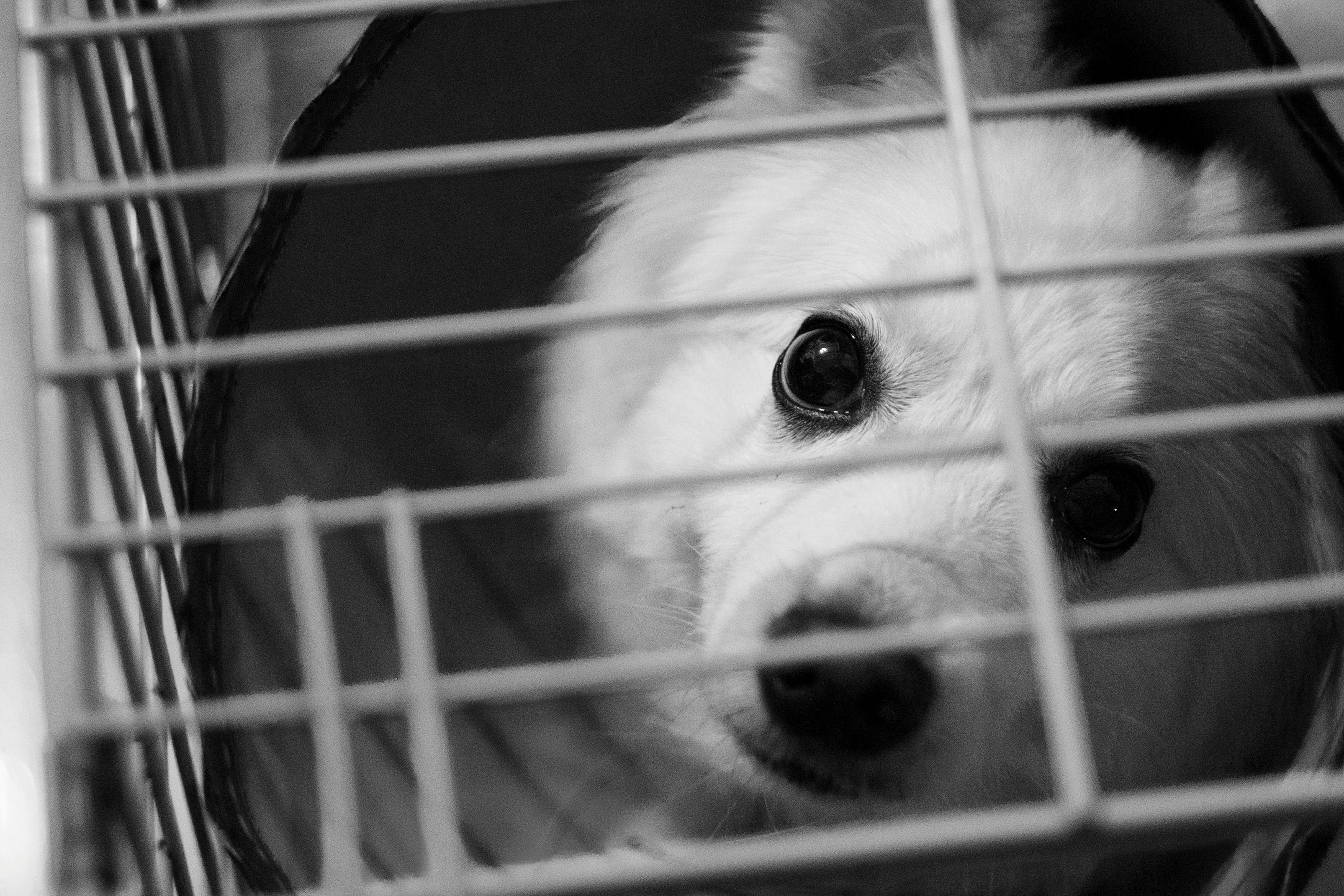
Have you ever noticed your dog’s nose and wondered what it might mean? It turns out, a dog’s nose could tell you more than you think about how they feel. Whether it’s wet, dry, warm, or cold, the moisture level of a dog’s nose might be a key indicator of their emotional state. Let’s dive into the fascinating reasons why dogs have wet noses and what it all means for their emotional well-being.
Why Do Dogs Have Wet Noses?
Dogs, like many animals, use their sense of smell as a primary way to interact with the world. Here are some reasons why a dog’s nose is usually wet:
- Enhanced Smell: Moisture on the nose helps to capture scent particles in the air. This makes it easier for dogs to pick up different smells, which is crucial for their hunting and social behaviors.
- Cooling Mechanism: Dogs don’t sweat like humans do. Their noses help to regulate body temperature. When a dog is panting, the moisture evaporates, helping to cool them down.
- Health Indicator: A wet nose is often seen as a sign of health in dogs. It can indicate that the dog is well-hydrated and free from illness. However, not all dry noses indicate sickness either.
The Emotional Connection
So, how does the moisture of a dog’s nose relate to their emotions? Well, it turns out that the state of a dog’s nose can reflect their feelings. Here’s a breakdown:
- Wet Nose: Generally, when a dog’s nose is wet, they might be feeling happy or excited. It’s like they are ready to explore or play.
- Dry Nose: A dry nose might indicate that a dog is feeling anxious or stressed; however, it could also just be that they are resting or sleeping comfortably.
- Temperature of the Nose: A warm nose can sometimes indicate that your dog is feeling unwell, but again, it can also fluctuate based on the environment.
Canine Nose Moisture: What to Watch For
Here’s what you should keep an eye on regarding your dog’s nose:
- Normal Moisture Levels: A healthy dog usually has a moist nose. It can vary throughout the day, so regular observation is key.
- Sudden Changes: If you notice a sudden change in moisture, temperature, or texture, it might be worth consulting a veterinarian.
- Behavioral Changes: Pay attention to your dog’s overall behavior. If the nose is dry, but they seem happy and active, it might not be a cause for concern.
Fascinating Facts About Dog Noses
Here are some interesting tidbits about dog noses that you might not know:
- Unique Patterns: Just like human fingerprints, each dog has a unique nose print.
- Scent Detection: Dogs have up to 300 million scent receptors in their noses, compared to about 5 million in humans.
- Nasal Health: Dogs can also suffer from nasal conditions like rhinitis or infections, which can affect moisture levels.
Comparing Wet and Dry Noses: What Do They Mean?
Here’s a quick comparison to help you understand the implications of wet vs. dry noses:
| Wet Nose | Dry Nose |
|---|---|
| Happy and excited | Possibly anxious or resting |
| Well-hydrated | Potential dehydration or health issues |
| Good sense of smell | May not be smelling as well |
Practical Examples of Nose Behavior
- During Playtime: If your dog’s nose is wet while they’re playing, it’s a sign they’re enjoying themselves.
- When They’re Alone: A dry nose when you’re gone might mean they felt a bit lonely or stressed.
- After a Walk: A wet nose post-walk indicates they are engaged with their environment and are likely feeling content.
Understanding your dog’s nose and its moisture levels is more than just a quirky observation; it can be a window into their emotional health. By paying attention to these signs, dog owners can better interpret their furry friend’s feelings and respond accordingly.
So next time you pet your dog and notice that wet nose, remember, it’s not just cute—it’s a key part of understanding how they feel.
Wet Nose vs. Dry Nose: What Each Condition Reveals About Your Dog’s Well-being
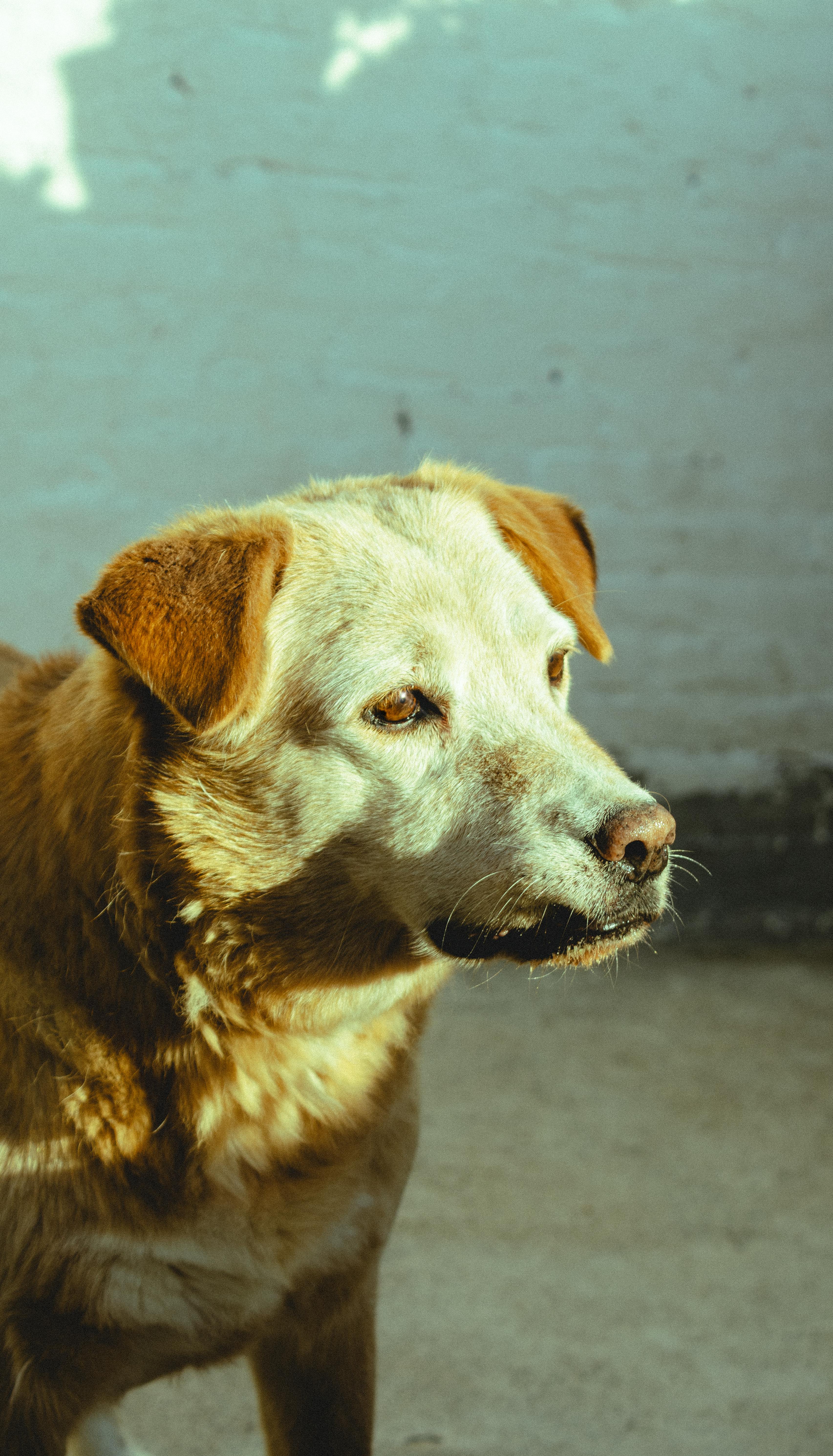
When you see a dog, one of the first things you might notice is its nose. You may wonder, why do dogs have wet noses? This is not just a random trait; it actually tells us much about their health and emotions. Wet noses and dry noses can reveal different things about a dog’s well-being, and understanding these differences is important for every dog owner.
The Science Behind Wet Noses
Dogs have moist noses for several reasons. Their noses are covered with a thin layer of mucus, which helps them detect scents more effectively. The moisture helps enhance the olfactory receptors, making their sense of smell more powerful. This is why dogs are often used in search and rescue missions or even sniffing out drugs. They can smell things we can’t even imagine!
Moreover, a wet nose can help regulate a dog’s body temperature. Dogs don’t sweat the way humans do. They primarily cool down through panting and the moisture on their noses. So, when a dog has a wet nose, it can indicate that they are well-hydrated and healthy.
What Does a Dry Nose Mean?
A dry nose may raise some concerns for dog owners. It can signify various conditions, ranging from minor to serious. Here are few reasons why a dog might have a dry nose:
- Dehydration: If a dog isn’t drinking enough water, it can lead to a dry nose.
- Illness: Dryness can indicate fever or other illnesses.
- Allergies: Just like humans, dogs can have allergies that affect their skin and nose.
- Environmental Factors: Hot weather or low humidity can dry out a dog’s nose.
However, not every dry nose means something serious. Sometimes, it can just be a temporary condition.
Comparing Wet and Dry Noses
Both wet and dry noses can tell you a lot about your dog’s health. Here’s a quick comparison:
Wet Nose:
- Indicates good hydration levels
- Enhances sense of smell
- Can help in regulating body temperature
Dry Nose:
- Might suggest dehydration or illness
- Could be a sign of allergies or environmental stress
- Sometimes just a temporary condition
Reasons Dogs Have Wet Noses
So, why do dogs have wet noses? There are several fascinating reasons:
- Enhanced Scent Detection: The moisture on a dog’s nose traps scent particles, making it easier for them to identify different smells.
- Cooling Mechanism: As mentioned earlier, wet noses help dogs cool down. The moisture evaporates, helping regulate their body temperature.
- Health Indicator: Vets often use the condition of a dog’s nose as a quick measure of health. A warm, dry nose can indicate illness, while a cool, wet nose often means the dog is in good health.
- Behavioral Signals: Dogs often lick their noses, which can be a sign of anxiety or nervousness. A wet nose can also signal excitement or happiness, especially when greeting their owners.
Practical Examples
Consider this: You’re at the dog park, and your pup’s nose is wet and cool. This is typically a good sign! It means they are healthy and happy. Now, if you notice their nose is warm and dry, it could be time to get them some water or check with a vet, especially if it persists.
Also, think about fur on a dog. Breeds like Bulldogs, with shorter noses, may have different moisture levels compared to breeds like Greyhounds, who have longer noses. This difference can also affect how we interpret their nose conditions.
Summary of Key Points
- Wet noses help dogs smell better and regulate temperature.
- Dry noses can indicate health issues but aren’t always cause for alarm.
- Always monitor any sudden changes in your dog’s nose condition.
Understanding the nuances of a dog’s nose can be helpful for dog owners. If you notice any significant changes, it’s always best to consult with a veterinarian. They can provide insights tailored to your specific dog’s needs and situations. By being aware of these signs, you can help ensure your furry friend stays healthy and happy.
The Role of a Dog’s Wet Nose in Communication: How They Connect with Us

Dogs have been our friends for thousands of years, and they communicate with us in ways that are both fascinating and complex. One of the most intriguing features of dogs is their wet noses. Have you ever wondered why do dogs have wet noses? Or how these wet noses help them connect with us? Let’s explore the role of a dog’s wet nose in communication and discover the reasons behind this unique characteristic.
The Science Behind Wet Noses
First off, a dog’s nose is wet for a couple of reasons. The main reason is that it helps them smell better. Dogs have an extraordinary sense of smell, and the moisture on their noses helps to capture scent particles from the air. When the nose is wet, it increases the surface area for olfactory receptors, allowing dogs to detect scents more effectively. It’s like having a built-in tool that enhances their ability to smell.
How Wet Noses Help in Communication
Dogs use their noses to communicate not just with us, but also with other dogs. Here are some important ways their wet noses play a role in communication:
Scent Marking: Dogs often mark their territory by leaving their scent behind. When they sniff another dog’s behind, they are gathering information about that dog’s health, mood, and even their reproductive status. Wet noses help them pick up those scents more efficiently.
Emotional Connection: When dogs nuzzle against us with their wet noses, it can be a sign of affection. This tactile communication helps strengthen the bond between dogs and their humans. They often use their noses to seek attention or comfort from us.
Health Indicators: A dog’s nose can also indicate their health status. A wet and cool nose is generally a sign of a healthy dog, but if it becomes dry and warm, it may suggest illness or dehydration. Paying attention to your dog’s nose can help you catch potential health issues early.
Historical Context of Dogs and Their Noses
Historically, dogs have been our companions for over 15,000 years, and their noses have always played a crucial role in their survival. Early humans relied on dogs for hunting and protection. The ability to track scents was vital, and dogs with strong smelling capabilities were highly valued.
Over time, selective breeding has enhanced these traits, leading to various breeds with specialized skills in scent detection, such as Bloodhounds or Beagles. Their wet noses have evolved as a natural adaptation that aids in their overall function and communication.
Fun Facts About Dog Noses
Here are some fascinating facts about dog noses that you might not know:
Did you know that a dog’s sense of smell is 10,000 to 100,000 times more sensitive than that of humans? That’s a huge difference!
Each dog has a unique nose print, much like human fingerprints. This means that nose prints could theoretically be used for identification.
Dogs can even detect certain diseases, such as cancer or diabetes, simply by smelling a person’s breath or skin.
The moisture on a dog’s nose can evaporate quickly, which is why they often lick their noses to keep them wet.
Comparing Dog Noses to Human Noses
When you compare dog noses to human noses, there are some clear differences:
| Feature | Dogs | Humans |
|---|---|---|
| Sense of Smell | Strong (10,000-100,000x) | Weaker (1x) |
| Nose Print Unique | Yes | No |
| Wetness | Typically wet | Typically dry |
| Functionality | Scent detection, communication | Limited scent detection |
Practical Examples of Nose Communication
You may notice your dog using their nose in various ways. For instance:
- If your dog nudges you with their wet nose, they might be asking for food or playtime.
- When dogs greet each other, they often sniff each other’s noses first before any physical interaction. This behavior is a form of saying “hello.”
- Dogs also use their noses to explore new environments, especially when they encounter new smells.
Understanding the role of a dog’s wet nose in communication adds a new layer to our relationship with them. We often overlook these subtle signals, but they are crucial for how dogs connect with us and their surroundings. Being aware of this can help us better interpret their needs and emotions.
As you spend time with your furry friend, take a moment to appreciate their wet nose. It’s not just a cute feature, but a vital tool for communication, connection, and understanding. So next time your dog nudges you with that wet nose, remember, they are speaking to you in a language that goes beyond words.
Curious About Canine Noses? Discover the Myths and Truths About Dog Nose Moisture
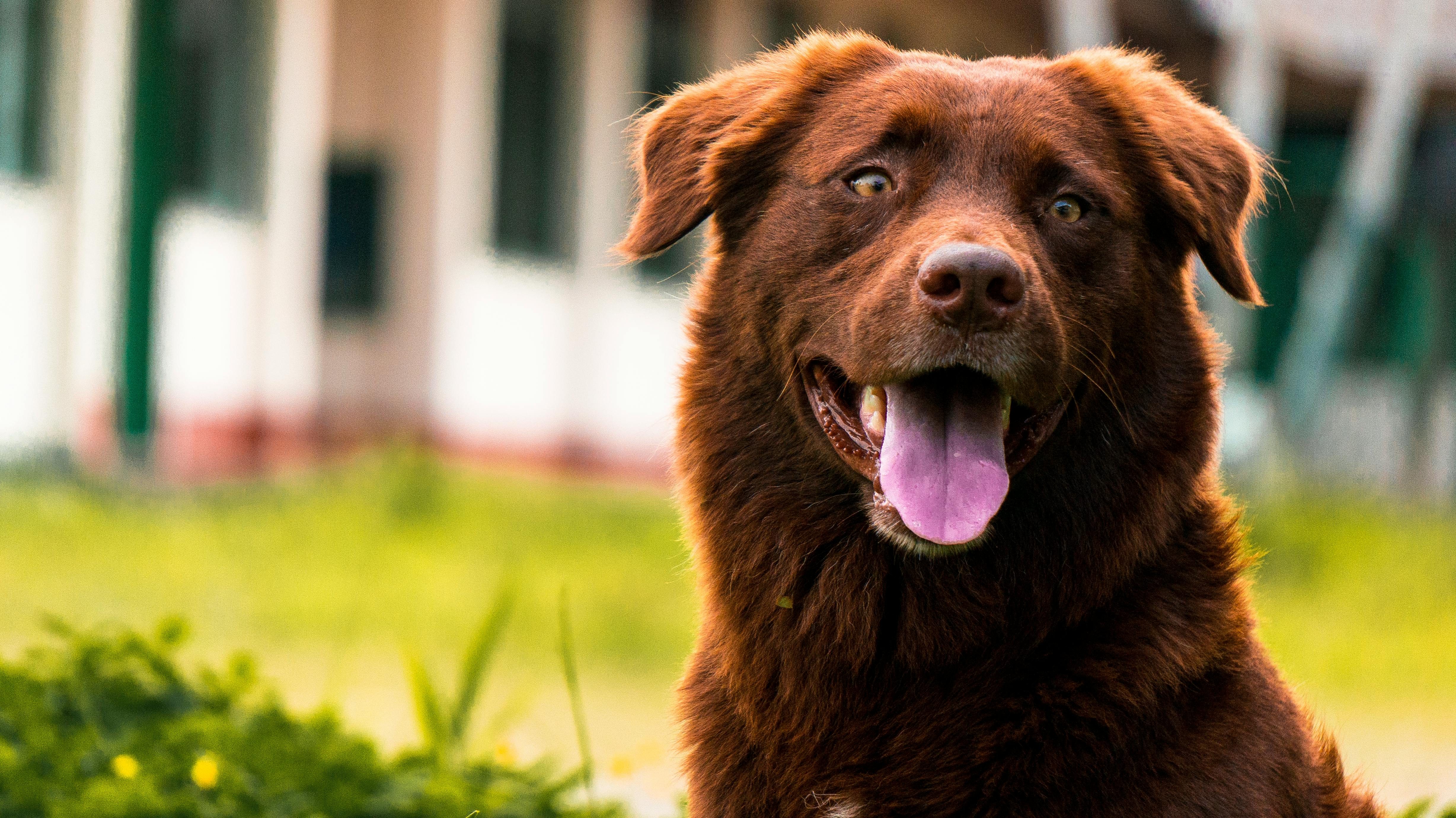
Curious About Canine Noses? Discover the Myths and Truths About Dog Nose Moisture, Why Do Dogs Have Wet Noses? Discover The Fascinating Reasons!
Have you ever wondered why your furry friend’s nose is often wet? It’s a question that many dog owners ask. A wet nose might seem like an odd characteristic but there’s actually more to it than meets the eye. Let’s dive into the fascinating reasons behind why do dogs have wet noses and explore some common myths and truths about canine noses.
The Basics of Dog Nose Moisture
First off, the wetness of a dog’s nose is not just for show. It serve several important functions. Dog noses are covered with a special type of skin that is different from the rest of their body. This skin is very thin and has a lot of glands which produce moisture. This moisture helps with their sense of smell, which is incredibly powerful compared to humans.
- Dogs have about 220 million scent receptors in their noses.
- Human noses only have around 5 million scent receptors.
- A wet nose helps to trap scent particles from the air, making it easier for dogs to detect smells.
Why Do Dogs Have Wet Noses?
There are several reasons why a dog’s nose is typically wet:
Cooling Mechanism: Dogs do not sweat like humans do. Instead, they regulate their body temperature through panting and by having a wet nose. The moisture evaporates, which helps cool them down.
Enhanced Smell: A moist nose enhances a dog’s ability to smell. When the nose is wet, it can capture more scent particles from the air. This is crucial for dogs, as their primary sense is smell, and they rely on it for communication and exploring their environment.
Health Indicator: A wet nose can sometimes indicate good health. However, a dry or cracked nose does not always mean a dog is sick. Many factors can affect nose moisture, including weather and activity level.
Myths Surrounding Dog Nose Moisture
There’s a lot of misinformation out there about dog noses. Below are some common myths and the truths behind them:
Myth 1: A cold, wet nose means a dog is sick.
- Truth: A dog’s nose can vary in temperature and moisture for many reasons. A sick dog may have a dry nose, but this isn’t a definitive indicator of health.
Myth 2: All dogs have wet noses all the time.
- Truth: Just like humans, dogs can have different moisture levels based on their environment, health, and activity.
Myth 3: Dogs lick their noses to keep them wet.
- Truth: While dogs do lick their noses, the moisture comes primarily from the glands in their nose, not from licking.
Fun Facts About Dog Noses
- Each dog’s nose print is unique, similar to human fingerprints.
- Dogs can detect certain diseases, including cancer, through their sense of smell.
- Some breeds have drier noses than others, such as Bulldogs and Boxers.
Comparing Dog Noses to Human Noses
Let’s take a quick look at how dog noses and human noses compare:
| Feature | Dog Noses | Human Noses |
|---|---|---|
| Scent Receptors | 220 million | 5 million |
| Moisture Production | High | Minimal |
| Temperature Regulation | Effective cooling method | Sweating |
| Nose Print Uniqueness | Unique to each dog | Not unique |
Practical Tips for Dog Owners
If you’re an owner of a dog, it’s important to monitor your pet’s nose as part of their overall health:
- Check Regularly: Look for changes in moisture and temperature. A dry, cracked nose could be a sign of dehydration or other health issues.
- Hydration: Ensure your dog has plenty of clean water, especially in hot weather, to help keep their nose moist.
- Consult Your Vet: If you notice any unusual changes in your dog’s nose or other symptoms, don’t hesitate to contact your veterinarian.
In summary, understanding why do dogs have wet noses can help you appreciate the unique biology of our canine companions. Their noses are not only fascinating but also essential for their health and well-being. So the next time you give your dog a pat on the head and feel that cool, damp nose, you can smile knowing there’s a lot going on under the surface!
Conclusion
In conclusion, the wet noses of dogs serve multiple essential functions that contribute to their overall health and well-being. Primarily, a wet nose helps regulate their body temperature and enhances their sense of smell by capturing scent particles more effectively. The moisture also plays a crucial role in keeping their nasal passages clear and assisting in communication with other dogs. Additionally, while a wet nose is often associated with good health, it’s important to remember that variations in moisture levels can indicate different health issues. As pet owners, it’s vital to monitor your dog’s nose and overall behavior for signs of illness. So, the next time you feel your dog’s cool, damp nose, remember the incredible biological purposes it serves. To ensure your furry friend stays healthy, schedule regular veterinary check-ups and keep an eye on any changes in their nose or behavior.

